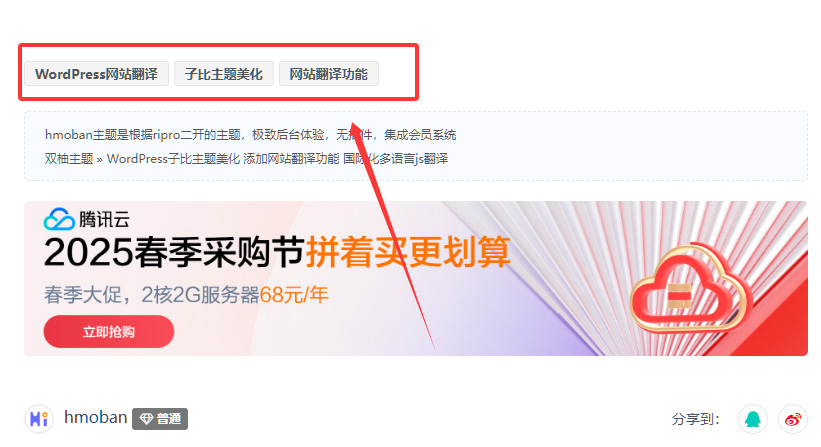都知道的,写文章时需要为文章设置标签,WordPress默认是不会自动把之前存在的标签自动加到文章中的,每篇文章你都得手动添加,而无论这个标签之前是否在其它文章中出现过。
本文就是为解决这个问题而写的

该代码理论上适用WordPress所有主题,我只在DUX和子比主题中测试通过,其它主题未作测试
/* 自动为文章添加标签 */
add_action('save_post', 'auto_add_tags');
function auto_add_tags(){
$tags = get_tags( array('hide_empty' => false) );
$post_id = get_the_ID();
$post_content = get_post($post_id)->post_content;
if ($tags) {
foreach ( $tags as $tag ) {
// 如果文章内容出现了已使用过的标签,自动添加这些标签
if ( strpos($post_content, $tag->name) !== false)
wp_set_post_tags( $post_id, $tag->name, true );
}
}
}
/* 自动为文章添加标签结束 */
function tag_sort($a, $b){
if ( $a->name == $b->name ) return 0;
return ( strlen($a->name) > strlen($b->name) ) ? -1 : 1;
}
// 为符合条件的标签添加链接
function tag_link($content){
$posttags = get_the_tags();
$match_num_from = 1; // 一个标签在文章中出现少于多少次不添加链接
$match_num_to = 5; // 一篇文章中同一个标签添加几次链接
if ($posttags) {
usort($posttags, "tag_sort");
//var_dump($posttags);
foreach($posttags as $tag) {
$link = get_tag_link($tag->term_id);
$keyword = $tag->name;
//将大小写强行更改为标签的大小写
//$content = str_ireplace(urldecode($tag->slug), $tag->name, $content);
//链接的代码
$cleankeyword = stripslashes($keyword);
$url = "<a href=\"$link\" title=\"".str_replace('%s',addcslashes($cleankeyword, '$'),__('【查看含有[%s]标签的文章】'))."\"";
$url .= ' target="_blank" ';
$url .= ">".addcslashes($cleankeyword, '$')."</a>";
$limit = rand($match_num_from,$match_num_to);
//不链接的代码
$pattern = "/<code.*?>(.*?)<\/code>/is"; // 匹配 <code> 标签
$content = preg_replace_callback(
$pattern,
static function($matches) use ($cleankeyword) {
return str_replace($cleankeyword, '%&&&&&%', $matches[0]);
},
$content
);
$title_pattern = "/<(h[1-6]).*?>(.*?)<\/\\1>/is";
$content = preg_replace_callback(
$title_pattern,
static function($matches) use ($cleankeyword) {
return str_replace($cleankeyword, '%&&&&&%', $matches[0]);
},
$content
);
//$content = preg_replace( '|(<a[^>]+>)(.*)('.$ex_word.')(.*)(</a[^>]*>)|U'.$case, '$1$2%&&&&&%$4$5', $content);
//$content = preg_replace( '|(<img)(.*?)('.$ex_word.')(.*?)(>)|U'.$case, '$1$2%&&&&&%$4$5', $content);
$cleankeyword = preg_quote($cleankeyword,'\'');
$regEx = '\'(?!((<.*?)|(<a.*?)))('. $cleankeyword . ')(?!(([^<>]*?)>)|([^>]*?</a>))\'s' . $case;
$content = preg_replace($regEx,$url,$content,$limit);
$content = str_replace( '%&&&&&%', stripslashes($cleankeyword), $content);
}
}
return $content;
}
//连接到WordPress的模块
add_filter('the_content','tag_link',1);
/* 自动为文章内的标签添加内链结束 */
以上代码放到子比主题的func.php或functions.php中,随便找位置

